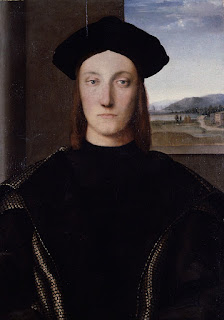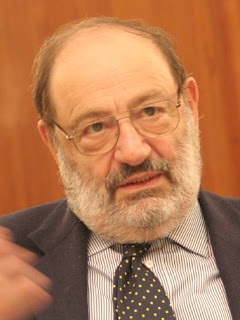Patron of the arts made money through war
 |
| Piero della Francesca's stark portrait of Federico da Montefeltro |
Federico da Montefeltro, one of the most successful of the Italian
condottieri, was born on this day in 1422 in Gubbio.
He has been immortalised by the famous portrait painted of
him by Piero della Francesca, where he was dressed in red and showing his
formidable profile.
Federico ruled Urbino from 1444 until his death,
commissioning the building of a large library where he employed his own team of
scribes to copy texts.
He was the illegitimate son of Guidantonio da Montefeltro
but he was legitimised by the Pope with the consent of Guidantonio’s wife.
Federico began his career as a condottiero - a kind of mercenary military leader - at the age of 16.
When his half brother, who had recently become Duke of Urbino, was assassinated
in 1444, Federico seized the city of Urbino .
To bring in money he continued to wage war as a condottiero.
He lost his right eye in an accident during a tournament and later commissioned
a surgeon to remove the bridge of his nose to improve his field of vision and
make him less vulnerable to assassination attempts.
Subsequently, he refused to have his portrait painted in full face, hence he is depicted in profile by Piero della Francesca.
Federico fought on behalf of the Sforza family, the King of Naples
and various Popes.
In 1482 he was asked to command the army of Ercole I of Ferrara in his war
against Venice
but he then caught a fever and died in Ferrara .
Federico imposed justice and stability on Urbino and supported
up and coming artists such as Raphael.
He took care of his soldiers when they were killed or
wounded by providing dowries for their daughters. As a result his soldiers
remained loyal to him and he never lost a battle.
 |
| The Ducal Palace in Urbino, a Unesco World Heritage Site |
Travel tip:
Urbino, which is inland from the Adriatic resort of Pesaro , in the Marche region, is a
majestic city on a steep hill. It was once a centre of learning and culture,
known not just in Italy
but also in its glory days throughout Europe .
The Ducal Palace Italy and is
listed as a Unesco World Heritage site.
Travel tip:
Gubbio, where Federico was born, is a small town in Perugia Umbria
(Photo of Ducal Palace at Urbino by Florian Prischi CC BY-SA 3.0)







